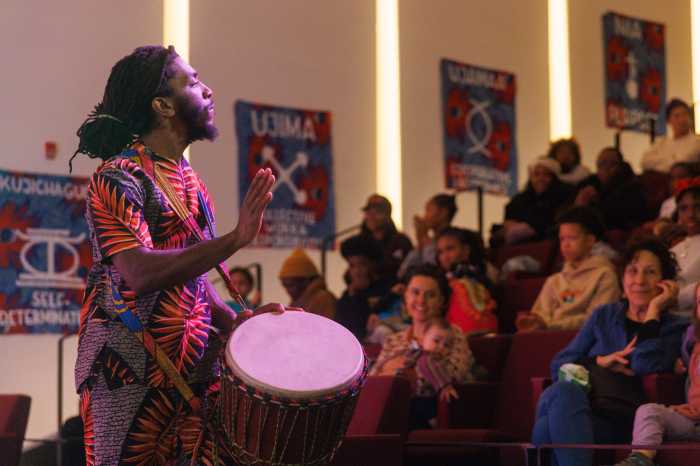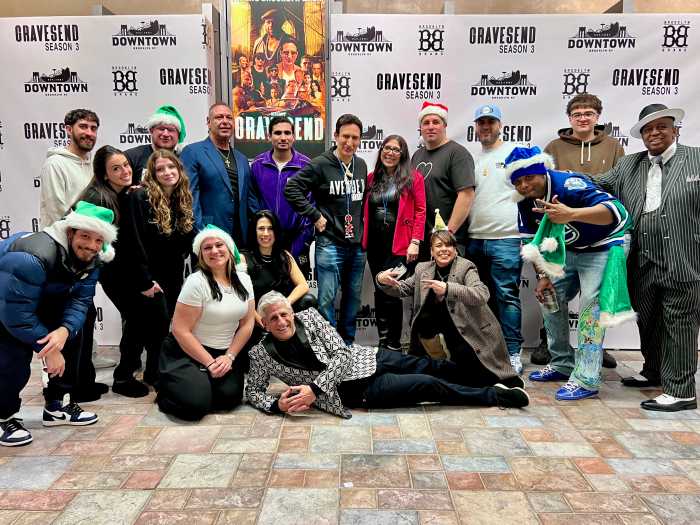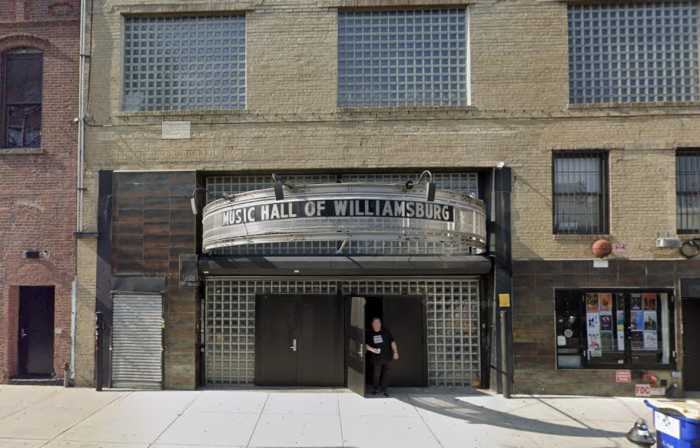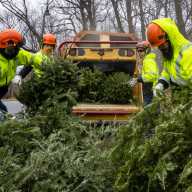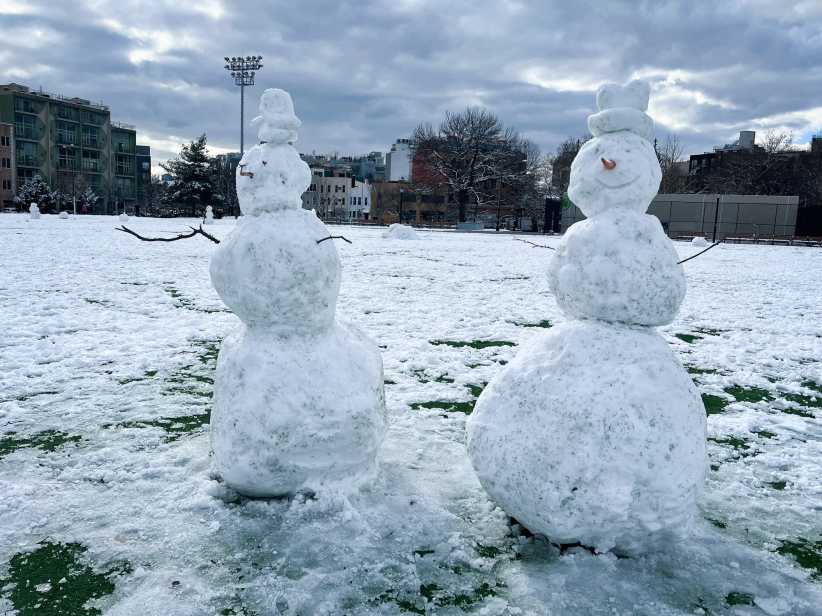Emerging puppet artists will once again
present their works-in-progress at the annual "Labapalooza!"
mini festival of new puppet theater at St. Ann’s Warehouse in
DUMBO, May 28 through June 6.
In the vanguard of the two-decade-long march from children’s
entertainment to mainstream media (witness Broadway’s "Avenue
Q"), Arts at St. Ann’s has been nurturing puppet artists
in its Puppet Lab since 1997.
"The lab is a development think tank," says "Labapalooza!"
director Dan Hurlin. "We look over applications in the fall,
and out of 25 or so, we select about eight to sink time and resources
into. Being part of the lab doesn’t mean you have to show. These
are works-in-progress. Sometimes they aren’t ready to show. And
that is fine."
This year, Hurlin has joined forces with David Neumann.
"He’s had experience with puppetry," says Hurlin. "He
choreographed Amy Trumpeter’s ’The Barber of Seville’ last year
at St. Ann’s Warehouse. I thought it would be great to have a
choreographer. Ultimately, it’s always the movement of the puppets
– that’s how the puppets speak. Puppetry is closer to dance than
to theater. I thought it would be good to have someone who speaks
the language of puppets."
But if puppets all speak the same language, they have many different
accents. Hurlin says he uses the broader definition of puppets,
which is "any performing object." Among the types of
puppets that will be on stage at St. Ann’s Warehouse are Japanese
bunraku (up to three puppeteers onstage manipulating a puppet),
string puppets (also known as marionettes), a hand puppet (performing
a duet with an actor) and shadow puppets (where the puppet is
behind a screen and seen by the audience as a silhouette).
Hurlin adds, "We have some puppets that don’t fit nicely
into a category. You can’t say they’re string puppets or rod
puppets."
This year’s "Labapalooza!" is divided into two programs.
Program A includes "Bedcase," the story of a young
woman crippled in a trolley accident; "The Attic,"
an adaptation of the Brothers Grimm fairytale "Jorinda and
Joringle"; "If You Take a Fish Out of Water, Will it
Swim?" in which an elderly woman recalls her travels through
Indonesia and the Netherlands; and "The Biggest Play in
the World," about a playwright struggling to produce a work
of genius without becoming consumed by her characters.
Program B includes a meditation on the beauty and terror of technology,
"The Bird Machine, an excerpt: Leo’s Dream"; the second
part of a chronicle of sleazy goings-on in a disreputable hotel,
"The 47th Street Hotel, Part 2: A Little Thong and Pants";
the story of a 50-year-old Civil War soldier, "Civil Woman";
and the tale of a tree branch that gets struck by lightning,
comes to life and finds love with its accompanying sorrow, "The
Adventures of Charcoal Boy."
Explaining the puppet artist selection process, Hurlin says,
"We look for a history of being able to pull off ideas.
We look at their work samples – videos and drawings. We’re basically
looking for interesting projects. It’s very subjective. David
and I work closely with the artists, so we want to make sure
we’re excited about their projects."
What excites Hurlin the most is the small, intimate scale that
is possible and the freedom that is inherent in puppetry.
"I like puppetry that looks for things human beings can’t
do. Puppets defy gravity. They can fall apart and come together
again," he says.
Hurlin explains that he was introduced to working in scale when
he was doing children’s theater in New Hampshire. Later, when
he was performing in an avant-garde show in which he played up
to 60 characters, he learned that "objects could be useful
as stand-ins for human beings." Finally, after visiting
the Museum of International Folk Art in Santa Fe, N.M., where
he saw an exhibit of toy theaters, Hurlin decided to make puppetry
his life’s work.
Although most countries have indigenous forms of puppetry for
adults, in the United States, the art form has been largely relegated
to children’s entertainment. Hurlin believes this is partly because
in England, Punch and Judy puppet shows, which had started as
street entertainment that incorporated the news of the day, had
become children’s entertainment by the 1700s. And it was as children’s
entertainment that puppetry was brought across the Atlantic.
In the 20th century, puppetry’s collaboration with television
in shows like the ’50s "Howdy Doody" and ’60s "Kukla,
Fran and Ollie" cemented the bond.
Then in the early 1990s, Jim Hensen (of Muppets fame), created
the biannual Hensen International Festival of Puppet Theater,
with events all over Manhattan.
"The festival was very visible and very exciting and incredibly
invigorating," says Hurlin.
Inspired by this success, "Labapalooza!" continues
to celebrate the creative spirit, technical skills and collaborations
that make puppetry both provocative and entertaining.
St. Ann’s Warehouse presents "Labapalooza!"
in two programs: Program A plays May 28 and June 5 at 8 pm, and
June 6 at 3 pm; and Program B plays May 29 at 8 pm, May 30 at
3 pm and June 4 at 8 pm. Tickets are $20 for one evening or $30
for both. St. Ann’s Warehouse is located at 38 Water St. at Dock
Street in DUMBO. For tickets, call (718) 254-8779 or visit www.Ticketweb.com
(up to three hours before show time).



